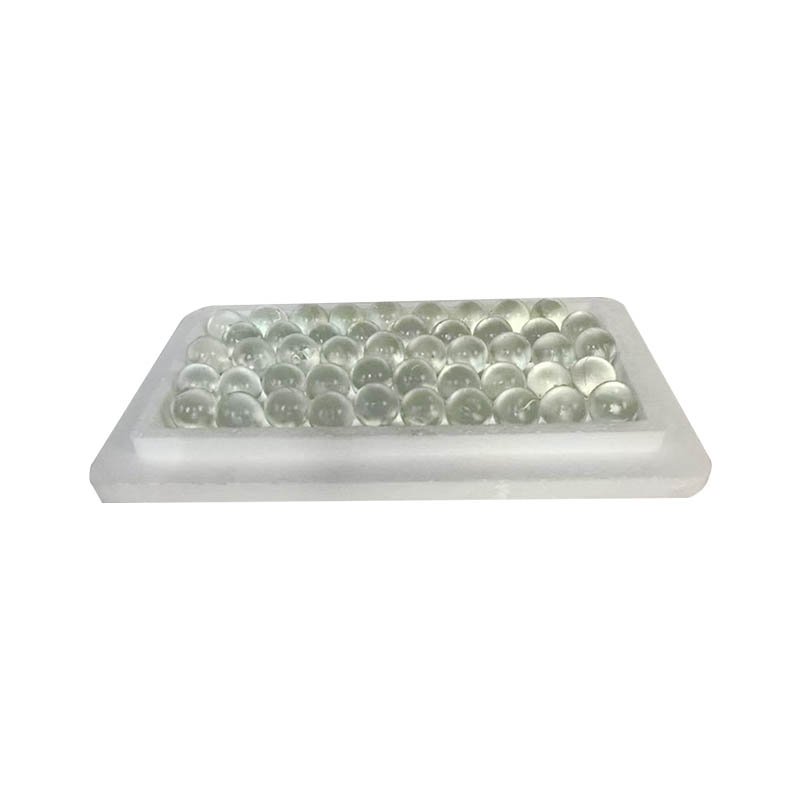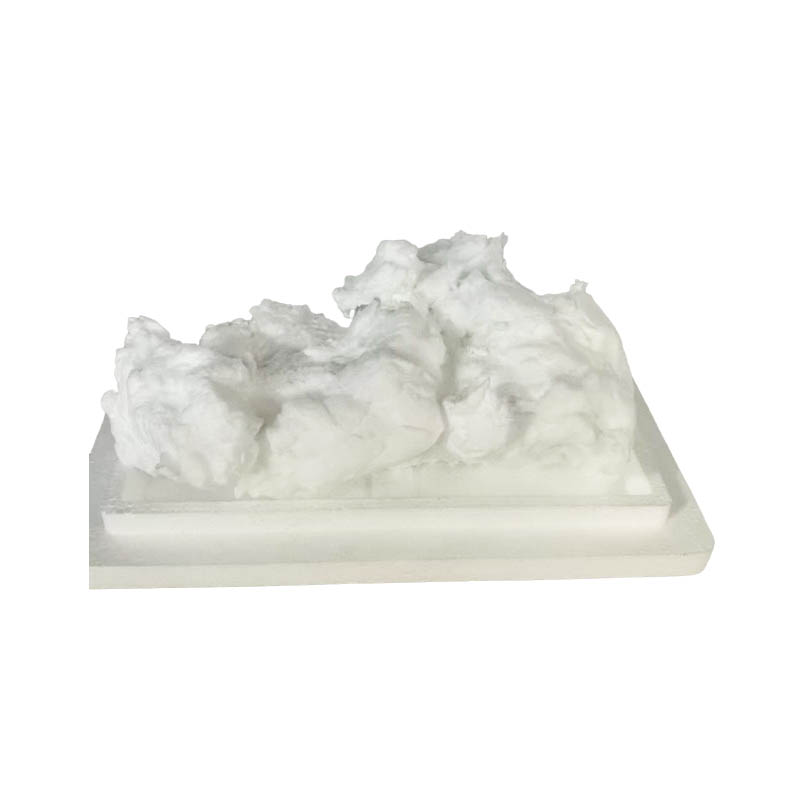Can Glass Microfiber Become an Irreplaceable Core Material for High-Performance Air Filter Paper?
Release Time : 2025-11-07
In modern air purification, industrial dust removal, and health protection systems, air filter paper serves as the first line of defense, its performance directly determining filtration efficiency, airflow resistance, and lifespan. Glass microfiber, the underlying material supporting this crucial function, has become an irreplaceable core raw material in the field of high-end air filter materials due to its unique physicochemical properties and tunable microstructure. Its professional value lies not only in its superior filtration performance but also in its systematic fulfillment of requirements for cleanliness, temperature resistance, and sustainable manufacturing.
Glass microfiber is an ultrafine inorganic fiber produced by drawing molten glass at high temperatures through high-speed centrifugation or blowing processes. Its diameter is typically controlled between 0.5 and 5 micrometers. This fine size endows it with a large specific surface area and abundant pore structure, providing an ideal physical basis for the efficient interception of submicron-sized particulate matter (such as PM2.5, bacterial and viral aerosols). During the filter paper forming process, these microfibers randomly interweave to form a three-dimensional network framework, ensuring high porosity to reduce airflow resistance while achieving efficient particle capture through multiple mechanisms such as inertial collision, interception, and diffusion. Especially in HEPA and ULPA level filtration applications, glass microfiber, due to its uniform size and lack of volatile organic compound (VOC) emissions, has become the preferred material for meeting international standards such as ISO 29463.
Compared to organic fibers (such as polypropylene and cellulose), glass microfibers possess significant thermal stability and chemical inertness. With a softening point exceeding 700℃, they can operate stably for extended periods without deformation or carbonization in high-temperature flue gas filtration, automotive cabin air conditioning, or industrial drying environments. Simultaneously, they exhibit natural resistance to acids, alkalis, solvents, and microbial corrosion, preventing filtration efficiency degradation or secondary contamination caused by material degradation. This characteristic makes them highly favored in environments with extremely high material purity requirements, such as semiconductor cleanrooms, biosafety laboratories, and medical protective equipment.
At the manufacturing process level, centrifugal glass microfibers achieve highly controllable diameter distribution and length consistency, ensuring stable performance between batches of filter paper. Combined with wet forming technology, the fibers are uniformly dispersed in water, then vacuum dehydrated, dried, and cured to form a dense and moderately strong filter paper substrate. Some high-end products also incorporate a gradient filtration layer design of ultrafine and coarse glass fibers, combining pre-filtration and high-efficiency fine filtration functions, extending the overall service life. Furthermore, glass microfibers themselves do not contain adhesives and can be self-bonded by van der Waals forces between fibers. If reinforcement is required, high-temperature resistant inorganic adhesives or low-volatile resins can be used to further ensure the integrity of the filter material under harsh operating conditions.
Environmental protection and safety are also important advantages. Glass microfibers are melted from natural mineral raw materials, and the production process does not produce persistent organic pollutants. Waste filter paper can be recycled into glass raw materials through high-temperature melting, achieving a closed-loop cycle. Despite historical discussions regarding inhalation risks, the glass microfibers in modern air filter papers are firmly embedded in the substrate, preventing fiber shedding under normal use and complying with occupational health and chemical regulations such as OSHA and REACH.
In summary, glass microfibers are not ordinary filler materials, but rather the cornerstone of high-performance filter media, integrating materials science, fluid mechanics, and environmental engineering. With its inorganic nature, it protects clean air, constructing an invisible yet crucial defense line between the micrometer and nanometer scales. When clean air silently flows through a seemingly ordinary filter paper, behind it lie countless glass microfibers, precisely arranged and with stable performance, silently shouldering the responsibility of protecting respiratory health and industrial safety.
Glass microfiber is an ultrafine inorganic fiber produced by drawing molten glass at high temperatures through high-speed centrifugation or blowing processes. Its diameter is typically controlled between 0.5 and 5 micrometers. This fine size endows it with a large specific surface area and abundant pore structure, providing an ideal physical basis for the efficient interception of submicron-sized particulate matter (such as PM2.5, bacterial and viral aerosols). During the filter paper forming process, these microfibers randomly interweave to form a three-dimensional network framework, ensuring high porosity to reduce airflow resistance while achieving efficient particle capture through multiple mechanisms such as inertial collision, interception, and diffusion. Especially in HEPA and ULPA level filtration applications, glass microfiber, due to its uniform size and lack of volatile organic compound (VOC) emissions, has become the preferred material for meeting international standards such as ISO 29463.
Compared to organic fibers (such as polypropylene and cellulose), glass microfibers possess significant thermal stability and chemical inertness. With a softening point exceeding 700℃, they can operate stably for extended periods without deformation or carbonization in high-temperature flue gas filtration, automotive cabin air conditioning, or industrial drying environments. Simultaneously, they exhibit natural resistance to acids, alkalis, solvents, and microbial corrosion, preventing filtration efficiency degradation or secondary contamination caused by material degradation. This characteristic makes them highly favored in environments with extremely high material purity requirements, such as semiconductor cleanrooms, biosafety laboratories, and medical protective equipment.
At the manufacturing process level, centrifugal glass microfibers achieve highly controllable diameter distribution and length consistency, ensuring stable performance between batches of filter paper. Combined with wet forming technology, the fibers are uniformly dispersed in water, then vacuum dehydrated, dried, and cured to form a dense and moderately strong filter paper substrate. Some high-end products also incorporate a gradient filtration layer design of ultrafine and coarse glass fibers, combining pre-filtration and high-efficiency fine filtration functions, extending the overall service life. Furthermore, glass microfibers themselves do not contain adhesives and can be self-bonded by van der Waals forces between fibers. If reinforcement is required, high-temperature resistant inorganic adhesives or low-volatile resins can be used to further ensure the integrity of the filter material under harsh operating conditions.
Environmental protection and safety are also important advantages. Glass microfibers are melted from natural mineral raw materials, and the production process does not produce persistent organic pollutants. Waste filter paper can be recycled into glass raw materials through high-temperature melting, achieving a closed-loop cycle. Despite historical discussions regarding inhalation risks, the glass microfibers in modern air filter papers are firmly embedded in the substrate, preventing fiber shedding under normal use and complying with occupational health and chemical regulations such as OSHA and REACH.
In summary, glass microfibers are not ordinary filler materials, but rather the cornerstone of high-performance filter media, integrating materials science, fluid mechanics, and environmental engineering. With its inorganic nature, it protects clean air, constructing an invisible yet crucial defense line between the micrometer and nanometer scales. When clean air silently flows through a seemingly ordinary filter paper, behind it lie countless glass microfibers, precisely arranged and with stable performance, silently shouldering the responsibility of protecting respiratory health and industrial safety.






